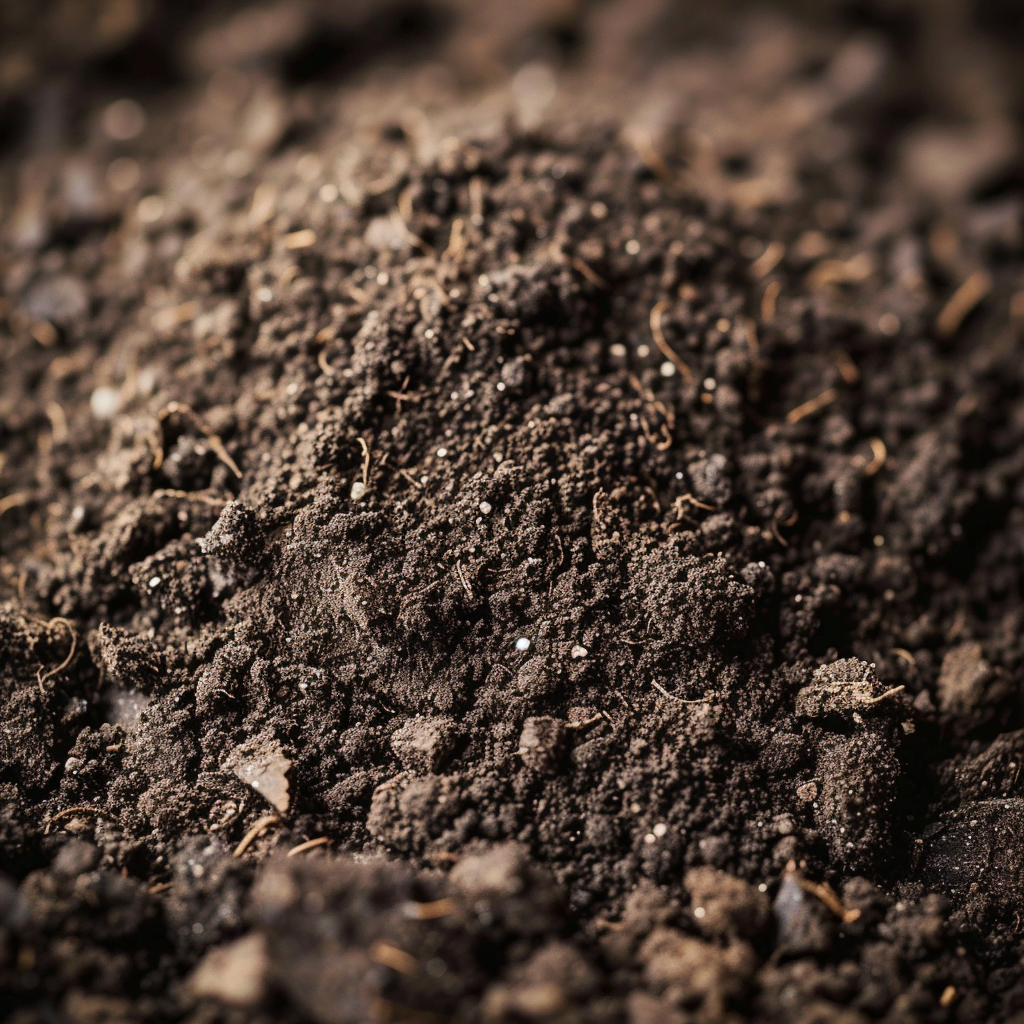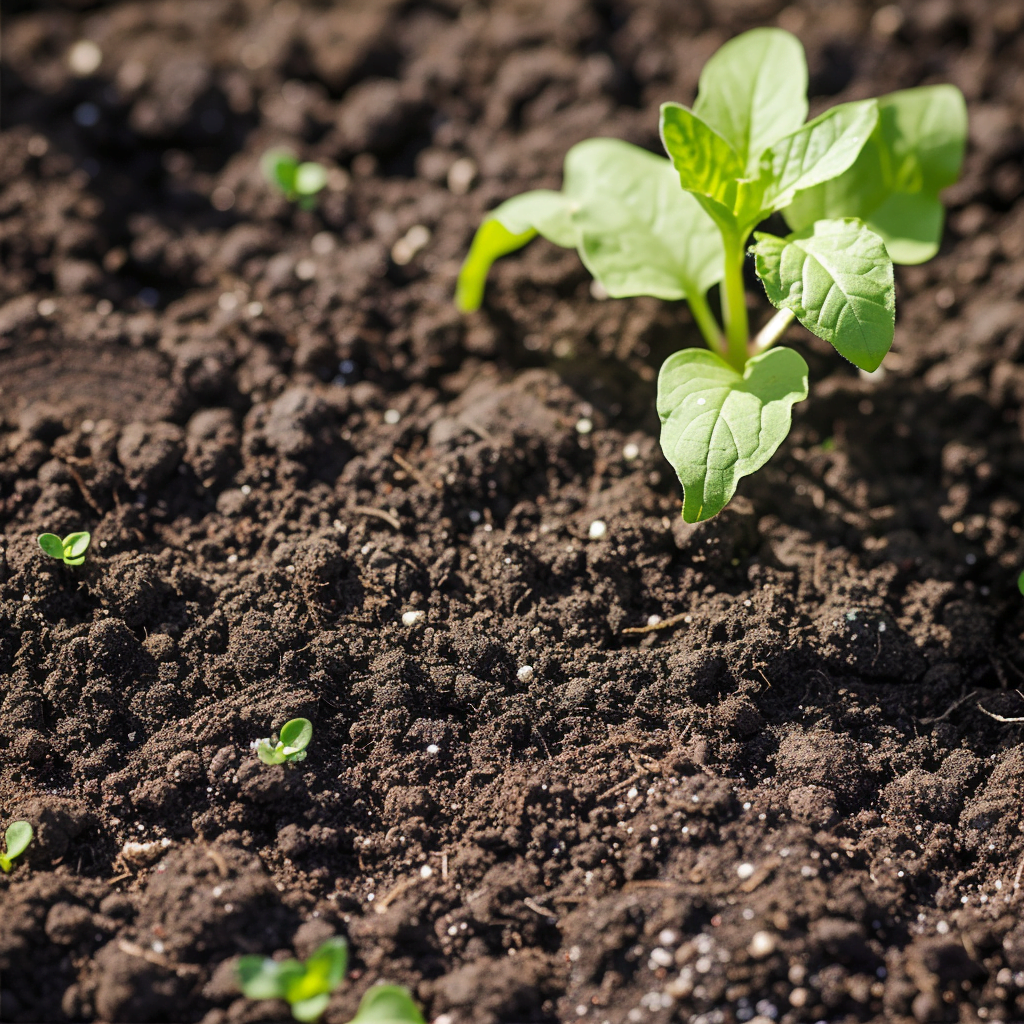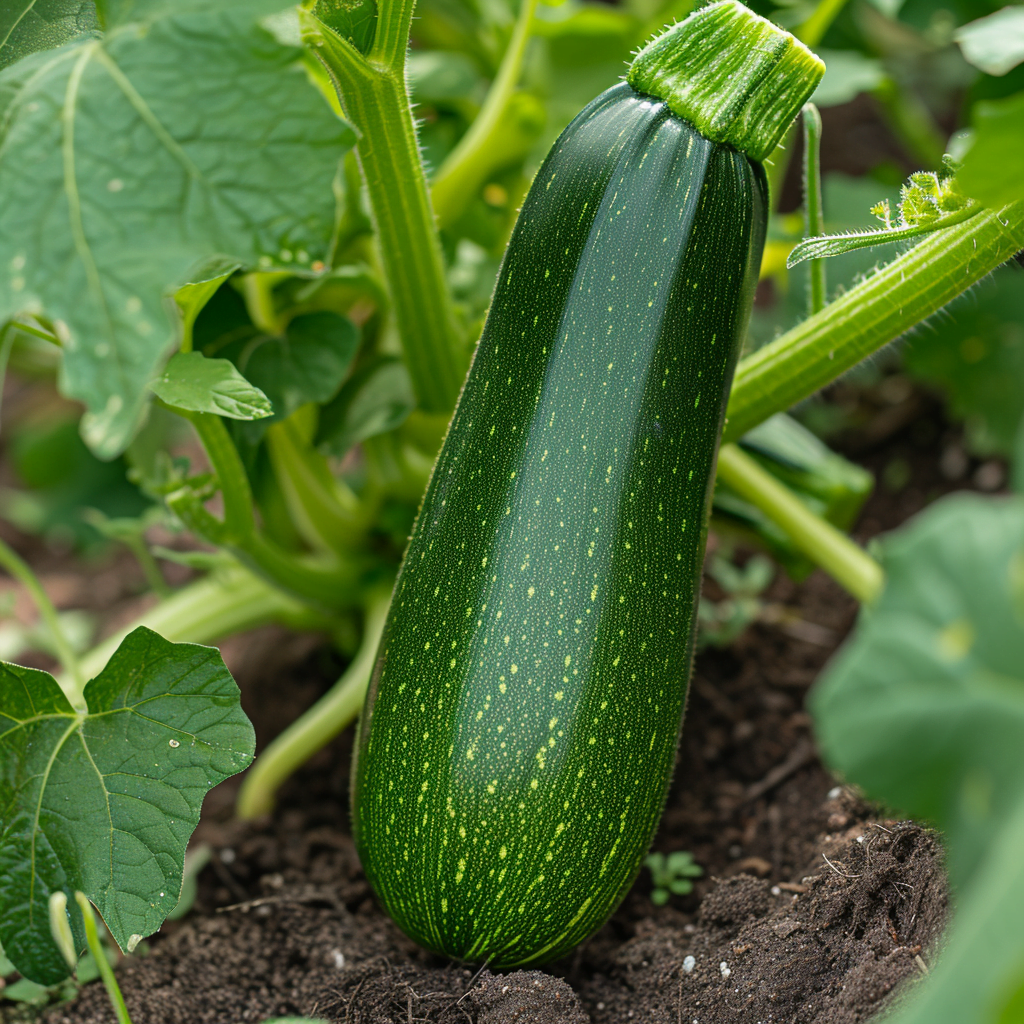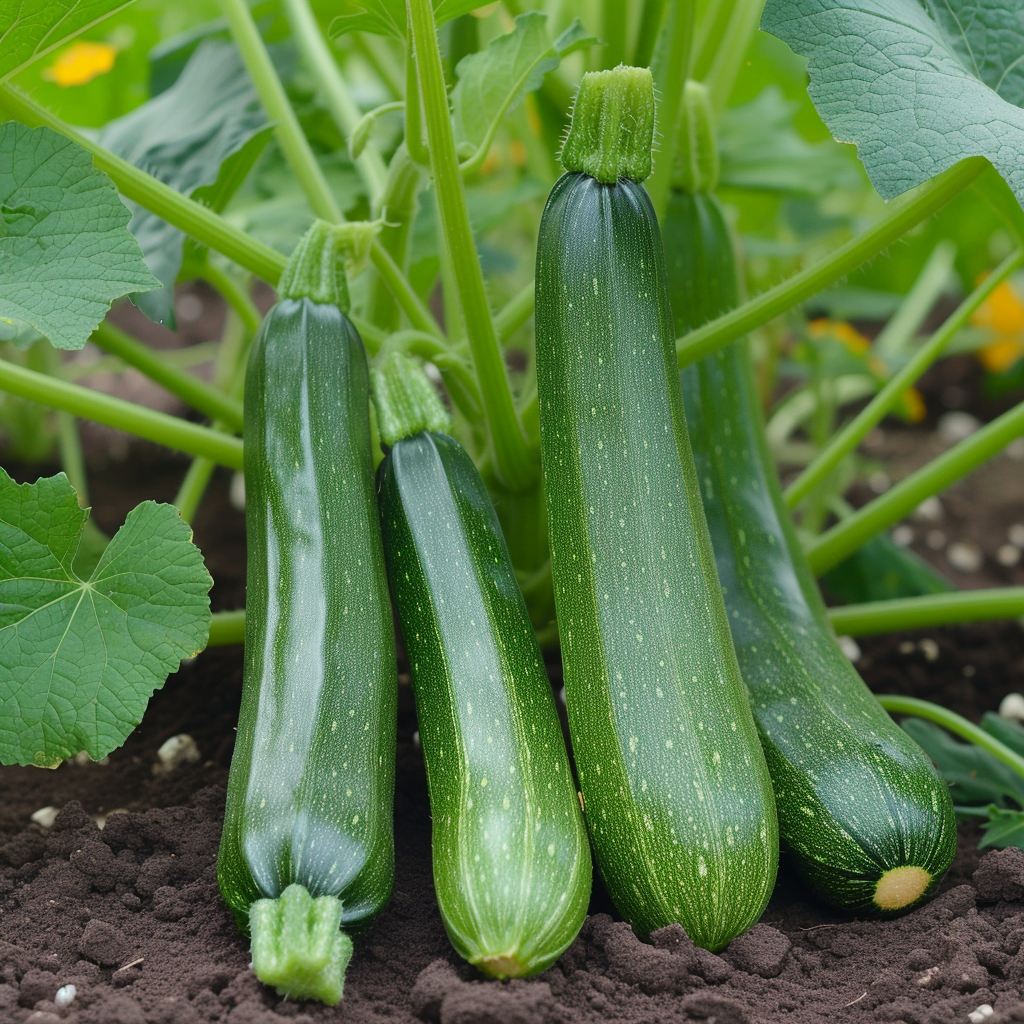I’ve always had a love for gardening, and recently I decided to try my hand at growing zucchini. But as I began to research and plan, I realized I had one burning question: how deep should soil be for zucchini? After all, getting the right soil depth is crucial for the health and success of any plant. In this article, I’ll explore the ideal soil depth for zucchini and offer some helpful tips for achieving the perfect growing conditions. So, if you’re a fellow gardener looking to grow this versatile and delicious vegetable, stick around and let’s dig into the details together.
Factors to Consider
When it comes to growing healthy and robust zucchini plants, there are several important factors that must be taken into consideration. These factors include soil composition, plant size, root depth, and watering requirements. Each of these elements plays a crucial role in determining the optimal soil depth for your zucchini plants.
Soil Composition
The first factor to consider is the composition of the soil. Zucchini plants thrive in well-draining soil that is rich in organic matter. This allows for proper nutrient uptake and ensures that the roots have access to the oxygen they need. Ideally, the soil should be loamy, with a good balance of sand, silt, and clay particles. A pH level between 6 and 7 is also ideal for zucchini plants.
Plant Size
The size of your zucchini plants will also influence the necessary soil depth. As zucchini plants grow, they develop a deep and extensive root system that requires adequate space to spread out. Therefore, it is important to take into account the mature size of your zucchini plants when determining the appropriate soil depth.
Root Depth
Zucchini plants have a relatively shallow root system compared to some other vegetables. The roots generally extend to a depth of around 12 to 18 inches. However, the exact depth may vary depending on the specific variety of zucchini you are growing. It is always best to check the planting instructions or consult with a gardening expert to determine the specific root depth requirements for your zucchini plants.
Watering Requirements
Another crucial factor to consider is the watering requirements of zucchini plants. These plants require consistent moisture to thrive and produce an abundant harvest. Therefore, it is important to ensure that the soil has enough depth to retain water and prevent excessive evaporation. Adequate soil depth also allows for proper drainage, preventing waterlogged conditions that can lead to root rot.
Recommended Soil Depth
To ensure optimal growth and productivity, it is essential to establish the correct soil depth for your zucchini plants. The recommended soil depth for zucchini can be categorized into two main sections: minimum soil depth and optimal soil depth.
Minimum Soil Depth
The minimum soil depth required for zucchini plants is generally around 8 to 12 inches. This depth allows for adequate root growth and development while providing sufficient space for the plants to establish a strong foundation. However, it is important to note that the minimum soil depth may not be ideal for maximizing yield and ensuring long-term plant health.
Optimal Soil Depth
For optimal growth and productivity, it is recommended to provide a soil depth of at least 18 inches for zucchini plants. This depth allows the roots to access essential nutrients and water deep within the soil profile. Additionally, a deeper soil bed helps to insulate the roots and provides stability for the plants.
Preparing the Soil Bed
Now that we understand the importance of soil depth for zucchini plants, let’s explore the steps involved in preparing the soil bed for optimal growth.
Clearing the Area
Before starting to prepare the soil bed, it is important to clear the area where you plan to grow your zucchini plants. Remove any weeds, rocks, or debris that may hinder the growth of your plants and prevent proper root development. Clearing the area ensures that the zucchini plants receive all the resources they need to thrive.
Loosening the Soil
Once the area is cleared, the next step is to loosen the soil. This can be done by using a garden fork or a tiller to break up any compacted soil. Loosening the soil helps to improve its structure, allowing for better drainage and root penetration. It also creates air pockets in the soil, facilitating oxygen exchange and promoting healthy root growth.
Amending the Soil
After loosening the soil, it is important to amend it with organic matter such as compost or well-rotted manure. This helps to improve the soil’s fertility, structure, and water-holding capacity. Organic matter enriches the soil with essential nutrients and promotes beneficial microbial activity, creating a favorable environment for the zucchini plants to thrive.

Container Gardening
If you don’t have access to a traditional garden bed or if you prefer to grow your zucchini plants in containers, there are some additional considerations to keep in mind. Container gardening offers flexibility and allows you to control the soil depth and composition more easily.
Choosing the Right Container
When selecting a container for growing zucchini, it is important to choose one that is large enough to accommodate the plant’s root system. A container with a capacity of at least 5 gallons is recommended to provide sufficient room for healthy root development. Additionally, ensure that the container has good drainage holes to prevent waterlogged conditions.
Soil Depth for Containers
In container gardening, the soil depth is of utmost importance since it directly affects the root growth and overall health of the zucchini plants. Aim for a soil depth of at least 12 to 18 inches in the container to allow ample space for the roots to spread out and access nutrients and water. It is also essential to use a high-quality potting mix that is specifically formulated for container gardening.
Avoiding Shallow Soil
While it may be tempting to cut corners and use shallow soil for your zucchini plants, it is important to understand the detrimental effects it can have on their overall health and productivity.
Root Restriction
Shallow soil severely restricts the root growth of zucchini plants, leading to stunted growth and reduced nutrient uptake. The roots require adequate depth to spread out and establish a strong foundation, allowing the plants to absorb essential minerals and water from the soil.
Reduced Nutrient Availability
Without sufficient soil depth, zucchini plants may struggle to access the necessary nutrients for optimal growth. Fertile soil is crucial for the production of healthy foliage, flowers, and fruits. Shallow soil limits the nutrient storage capacity, resulting in nutrient deficiencies that can negatively impact the overall health and productivity of the plants.
Limited Water Retention
Shallow soil also compromises the water-holding capacity, making it difficult to maintain consistent soil moisture. Inadequate water retention can lead to water stress, which can result in poor fruit set, blossom end rot, and overall reduced yields. Deep soil allows for efficient water absorption and retention, providing a stable water supply for the zucchini plants.

Ensuring Proper Drainage
Proper drainage is a vital aspect of soil health and must be considered when preparing the soil bed for your zucchini plants. Good drainage prevents waterlogged conditions, which can lead to root rot and other diseases. It also eliminates excess salts and prevents the build-up of harmful substances in the soil.
Importance of Good Drainage
Healthy roots require oxygen to function properly. When soil becomes waterlogged, the air pockets within the soil are filled with water, depriving the roots of oxygen. This lack of oxygen can lead to root suffocation and subsequent plant decline. Good drainage allows excess water to drain away, ensuring that the roots have access to the oxygen they need to thrive.
Improving Soil Drainage
To improve soil drainage, you can take several steps. First, avoid compacting the soil by walking on it when it is wet. Compacted soil prevents water from draining properly and restricts root growth. Instead, use boards or stepping stones to distribute your weight when working in the garden.
Additionally, adding organic matter such as compost to the soil can help improve its structure and drainage capabilities. Organic matter helps to break up heavy clay soils and improves water infiltration. Incorporating coarse sand or gravel into the soil can also enhance drainage, especially in heavy clay soils.

Mulching for Moisture Retention
Mulching is a valuable practice that can help conserve moisture, suppress weed growth, and improve overall soil health. When it comes to zucchini plants, mulching can be particularly beneficial in maintaining consistent soil moisture.
Benefits of Mulching
Mulching provides a protective layer over the soil surface, reducing water evaporation and preventing weed growth. By conserving moisture, mulch helps ensure that the zucchini plants have a steady and adequate water supply, reducing the risk of water stress and promoting healthy growth.
Mulch also helps moderate soil temperature, preventing excessive heat build-up during hot summer months. This is especially important for zucchini plants, as they prefer moderate soil temperatures for optimal growth and fruit production.
Applying Mulch to Zucchini Plants
To mulch your zucchini plants, apply a layer of organic mulch such as straw, wood chips, or shredded leaves around the base of the plants. Aim for a depth of around 2 to 3 inches, making sure to leave a gap around the stem to prevent moisture accumulation and potential stem rot.
Checking Soil Depth
Regularly checking the soil depth is crucial to ensure that the zucchini plants have enough space for root development and access to essential nutrients and water. Measuring the soil depth is a simple yet effective way to monitor the condition of the soil bed.
Measuring Soil Depth
To measure the soil depth, use a ruler or a small garden trowel to dig down to the root zone of your zucchini plants. Gently loosen the soil around the plants, being careful not to damage the roots. Measure the depth from the surface down to the root zone, ensuring that it meets the recommended soil depth for zucchini plants.
Rectifying Shallow Soil
If you find that the soil depth is too shallow, there are steps you can take to rectify the situation. You can add a layer of compost or well-rotted manure to increase the soil depth and improve its fertility. Make sure to mix the organic matter thoroughly into the existing soil to ensure proper integration.
In container gardening, you can transfer your zucchini plants to larger containers with sufficient soil depth. This allows the plants to establish a stronger root system and access the necessary nutrients for healthy growth.
Maintaining Soil Quality
Maintaining soil quality is essential for long-term plant health and productivity. Here are a few practices that can help ensure that the soil remains fertile and conducive to the growth of zucchini plants.
Regular Soil Testing
Performing regular soil tests is a valuable practice to assess the nutrient levels and pH balance of the soil. Soil tests provide important information about the soil’s fertility, allowing you to make informed decisions when it comes to fertilizer application and soil amendments. Soil testing kits can be purchased from garden centers or through agricultural extension services.
Adding Compost and Organic Matter
Adding compost and other organic matter regularly is crucial for replenishing nutrients and improving soil structure. Compost provides a slow-release source of essential nutrients, improves water-holding capacity, and promotes beneficial microbial activity. Apply a layer of compost to the soil surface each year and incorporate it into the top few inches of soil.
Crop Rotation
Practicing crop rotation helps prevent soil-borne diseases and nutrient deficiencies. Avoid planting zucchini or other members of the squash family in the same location year after year. Instead, rotate your crops to different areas of the garden to maintain soil health and promote overall plant vigor.

Conclusion
When it comes to growing healthy and productive zucchini plants, soil depth plays a critical role. By considering factors such as soil composition, plant size, root depth, and watering requirements, you can determine the appropriate soil depth for your zucchini plants. Providing the ideal soil depth ensures that your zucchini plants have ample space for root development, access to essential nutrients and water, and optimal growing conditions. By following the recommended practices for preparing the soil bed, maintaining soil quality, and practicing proper drainage, you can set your zucchini plants up for success and enjoy a bountiful harvest year after year. Happy gardening!



